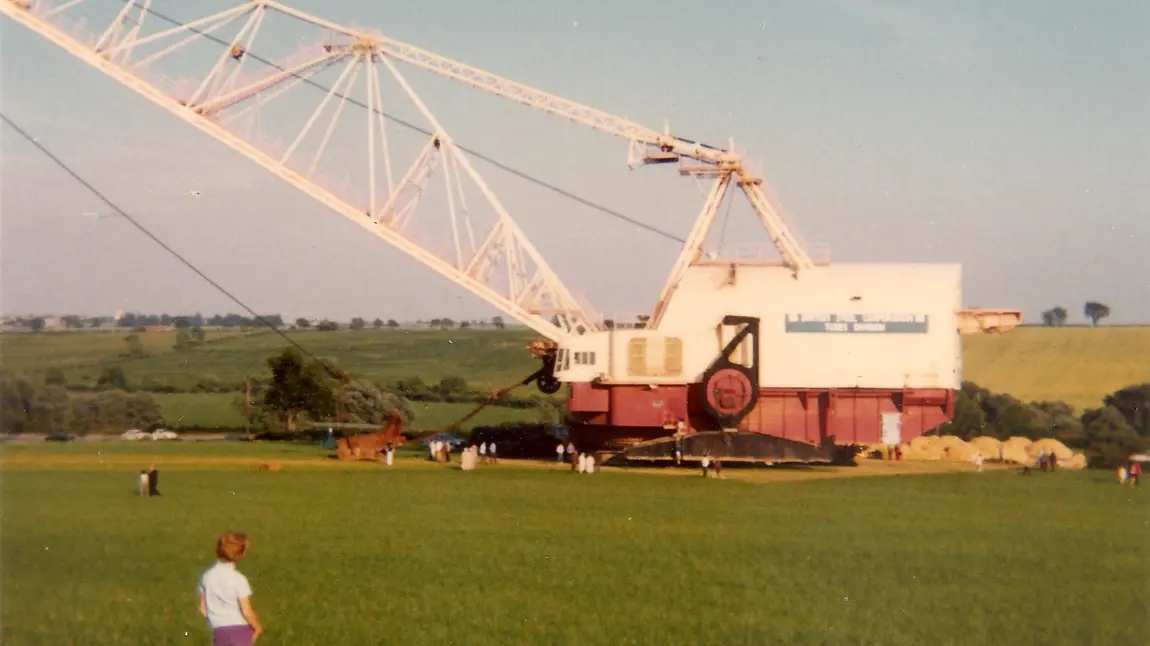Sundew Cabin project celebrates £8,100 HLF grant

Rocks By Rail – The Living Ironstone Museum in Cottesmore, Rutland has received a HLF grant to restore the Sundew Cabin, the last remaining piece of a vast excavating machine that played an important role in the East Midlands’ ironstone mining industry.
The Sundew was built in the late 1950s and dominated the local skyline until the 1970s. At the time it was the largest machine of its kind in the world and was seen as a symbol of an industry which once defined the region but has now all but disappeared.
It made headlines when, in 1974, it crawled along the landscape from Exton Park to a new quarry near Corby. In what became known as the ‘Great Walk’, the giant machine took three months to make the 13 mile trip, traveling at one-tenth of a mile per hour.
The Sundew was scrapped between January and June 1987 after the last ironstone quarries closed. However, the museum saved the left driving cab, the one surviving piece of this huge machine, and it has been an exhibit for decades but has sadly fallen into a state of decay.
The museum has been given an £8,100 Sharing Heritage grant for the project which will pay for significant work to bring the derelict cab back to a good condition. It will then become a self-contained museum with audio visual equipment installed to help tell the history behind the machine.
Commenting on the award, Steven Parker said: “This grant will guarantee that the story of Sundew will remain in the public consciousness. We have established through our own events that there is a real appetite in this region for precisely this type of history – people still remember it, they remember their parents and grandparents working in the ironstone quarrying and related industries. Through the Great Walk, Sundew captured the imagination of people in a way that most machines do not, and it is still often remembered fondly by people who went to see it. This grant will ensure we at Rocks By Rail can keep this alive.”
Vanessa Harbar, Head of HLF East Midlands, said: “The sight of this imposing machine crawling along towards Corby is a local story that has lived long in the memory. When restored, the cabin will become a great resource for people looking to find out more about the region’s mining heritage - both those who remember the Sundew in its heyday and younger people born after its time. Our Sharing Heritage grants are all about helping people to explore these types of stories and celebrate and discover more about the history of the place where they live.”
Rocks By Rail – The Living Ironstone Museum is a wholly volunteer-run museum which aims to recreate the experience of a 1950s and 60s ironstone quarry and railway, which were prevalent throughout the East Midlands during that period. Volunteers from the project are looking to gather the memories and stories of people from local communities who remember the Sundew and its Great Walk to help shape the new exhibition. They are also looking for new volunteers to get involved with the project and the wider running of the museum. A special Sundew event will also be held at the museum upon completion of the project.
Notes to editors
About Rocks By Rail – The Living Ironstone Museum
Rocks By Rail is an accredited museum centring on the site of the Cottesmore Iron Ore exchange sidings – where once iron ore was brought from surrounding quarries to be sent onto the mainline railway and off to the steel works. The ironstone industry was one of the driving factors of development from the industrial revolution onwards, and in many ways has shaped our lives today. Rocks By Rail want to share the experience of a small ironstone quarry and associated railway system, as this type of industry was once widespread through the region.
The museum is run entirely by volunteers carrying out a vast range of tasks from landscaping and catering through to driving trains and quarry machines, and also restoring locomotives and rolling stock back to prime condition.
The museum regularly holds running days in which these scenes of old can be witnessed, and also holds special 'themed' events where one particular quarry or event is remembered and portrayed.
The museum is currently arranging experience days, where those who are interested can come along and spend a day in the quarry interpretation area, and experience a day as a 1950s quarryman.
Further information
Rocks By Rail: Gary Brown on tel: 07873 721 941, or email: curator@rocks-by-rail.org.